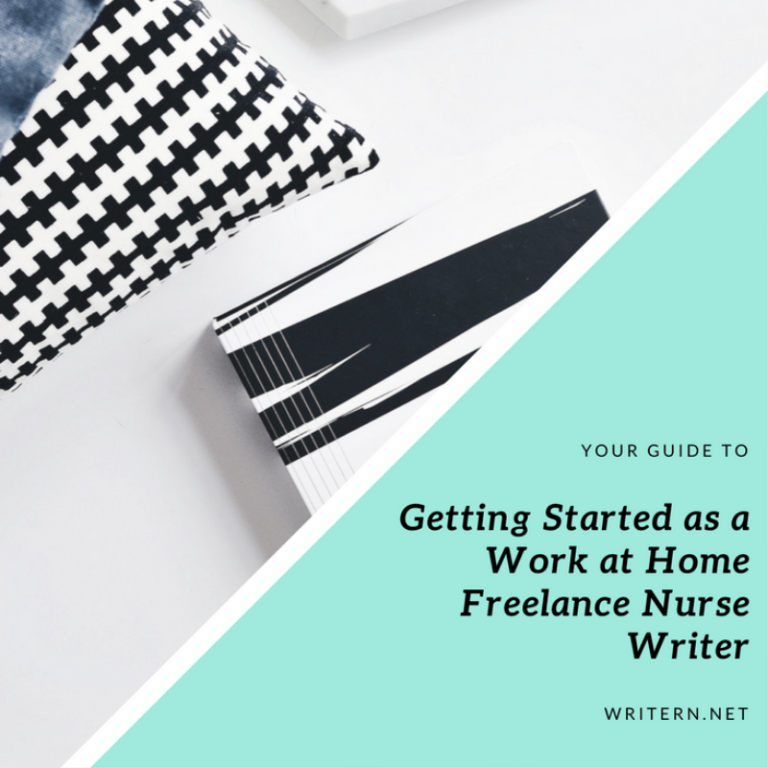

#Getting started as a freelance writer how to#
Here’s a blog post I wrote for you about how to do just that specifically geared towards freelance writing, but with some tips no matter what you do as a freelancer. Step Three: How to Build a Freelancing Portfolioīuilding a killer freelancing portfolio is key to landing awesome clients.

This saves your precious time so you can focus on writing instead of finding clients.Ĭourse: How I Made $300,000+ on Upwork (includes hourly rate tracker + cover letter templates!)īlog Post: How I Make $20,000-$30,000 Per Month as a Freelancerīlog Post: How to Make $350/Hr as a Freelance Writerĭigital Download: Upwork Cover Letter Templatesīlog Post: Getting Started: How I Made My First $10,000 as a Freelancer The other nice thing about freelance platforms is that the algorithm will over time bring you more and more inbound leads, AKA clients you didn’t have to submit a proposal to or find yourself! I’ve had days where three or four clients would invite me to interview for awesome jobs, and I didn’t have to lift a finger.

Once you build momentum, you can dive into setting up your own entity, getting an accountant, having a lawyer make your freelancing contracts and all that jazz - but for beginners it’s worth the 20% fee to work on a freelancing platform. You’ll eventually need to do this, but when you’re just getting started I recommend you begin on a freelancing platform to keep it simple. If you’re not working on a freelance platform, you’ll need to develop your own freelance contracts, billing system, and client portal. (Those are also available in my shop as well!)
#Getting started as a freelance writer free#
I recently released my first course on how I made $300,000+ on Upwork and how to optimize your profile, avoid being scammed by clients, and work with amazing people you adore while being paid really well to write! I also include some free digital downloads like my hourly rate calculator and my Upwork cover letter templates in the course. I’ve found a ton of success on Upwork, but Fiverr is kind of a cheap marketplace and I don’t recommend it unless you’re OK with starting with very low-priced services. When you’re getting started, I recommend beginning on a freelance platform like Upwork or Fiverr. Step Two: Pick a Freelancing Platform and Set Your Rates One-On-One Coaching: 30 Days to Freelancing Success with Amy Suto Keep looking until you find it, and don’t be afraid to learn new skills if you need to spend some time exploring!īlog Post: How to Write a Memoir (Ghostwriting 101)īlog Post: How to Write a Memoir: Be a Detective in Your Own Lifeīlog Post: 5 Ways to Quit Your Day Job and Become a Full-Time Freelancer Even though there may be days when you’re burned out or tired, you should feel a flutter of excitement when you’re thinking about your chosen niche. It should be something you’re curious about and want to hone your skills and learn more about! The goal here is to pick a type of work that feels like play. Your niche should be an area you LOVE writing in. When I got started, I focused more on blogging and memoir ghostwriting as I had a larger portfolio in those areas, so know that it’s okay to shift around a bit as long as you’re developing a strong portfolio in your areas of interest. I’ve seen writers specialize in things as specific as “construction copywriting” and get a ton of work, so pick a niche and get to it. People like to hire experts: they don’t want a writer who can do a bunch of things well, they want the best writer for their project. Okay, here’s the guide! Step One: Define Your Niche: Follow Your Excitement I’ve also been seeing my students find success on Upwork through my course on how I made over $300k on the freelance platform Upwork, so I’ve got a lot of materials developed for you!


 0 kommentar(er)
0 kommentar(er)
